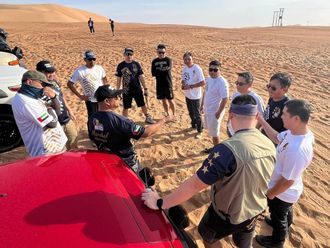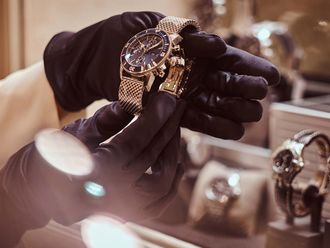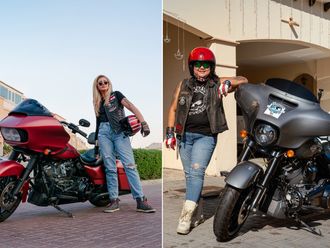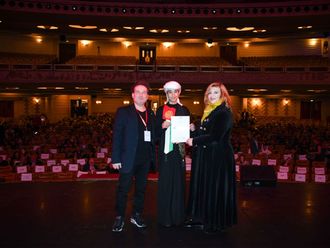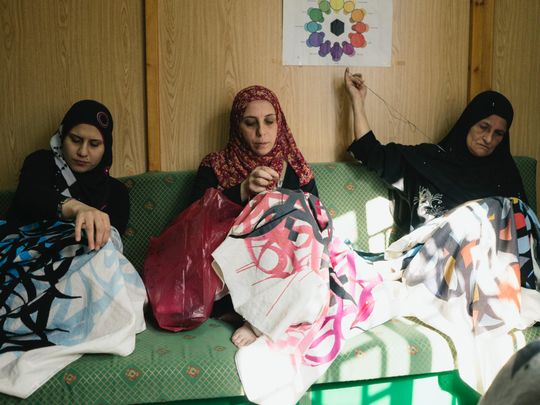
The first time I saw tatreez, which is a kind of embroidery, it adorned the front and cuffs of a Palestinian thobe, a traditional embroidered ankle length robe that was on display. A plastic mannequin in a hijab and with faded face paint was wearing it, at one of the shops in Naif, in Deira, Dubai. Dozens of bustling people were glancing at the robe, touching the threads, rubbing the cloth between their fingers and moving on.
The threads didn’t show any signs of damage. They were resilient and determined to hold on to the cloth. Perhaps representing the grit of the artisans who had made it.
When I took a closer look the snugly stitched patterns, tatreez looked like a crisscross of colourful scratches across an art canvas. As I kept looking, like magic, these patterns began to take shape. A flower here. A tree there. It felt like I was looking at a painting waiting to be interpreted and that the tatreez patterns were trying to tell a story.
In my quest to find these stories, I spoke to 52-year-old Randa Yousef Al Miyari, a tatreez artisan from Ain al-Hilweh, a Palestinian refugee camp in the Sidon district of Lebanon. Al Miyari was born in the refugee camp after her family, including her grandparents, became refugees.
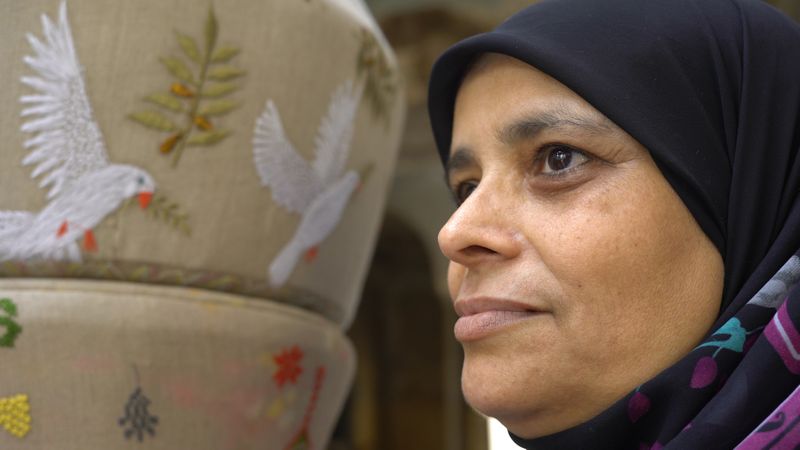
If not for the camp, Al Miyari might have still lived in Acre, a city in Israel, the place where her family is from. Still, a lack of basic resources doesn’t stop Al Miyari from slipping needles into the weave of fabrics. Even if she can’t leave the camp, tatreez is the only way her skill and her words stand a chance to transcend all borders.
We also speak to Wafa Ghnaim, researcher and educator at US-based The Tatreez Institute, and a collections specialist at The Museum of the Palestinian People. She is also an instructor at the Smithsonian Institution, the world's largest museum, education, and research complex based in Washington, D.C., USA.
From ancient origins to modern identity
1. What does tatreez mean?
Wafa Ghnaim: Regarding the ‘word’ tatreez, it's an Arabic word which primarily means embroidery, or the ornamentation of fabric in general. So, today, much of the reference of tatreez is used to talk about Palestinian embroidery… because that's the most known in our community. It’s important to highlight that the Palestinians were participating in a global culture of embroidery and our ancient practice like many other cultures, goes far back.
2. How old is the art of tatreez and why did people make tatreez?
Artisan Randa Yousef Al Miyari: Tatreez is an ancient embroidery technique that dates back to the Canaanite era [people who lived in the Arab region, 3,000 years ago]. It has been used for centuries by Palestinians - using different colours and patterns to symbolise things like social and marital status as well as the village you’re from.
Throughout history, tatreez has always been used to tell the story of Palestine. Every pattern, every stitch tells the story of where the wearer is from, their history, and where they stand in life [embroidery in gold and silk threads would mean royalty]. So each tatreez piece tells the person's story and history using nothing but thread, needle, and colour.
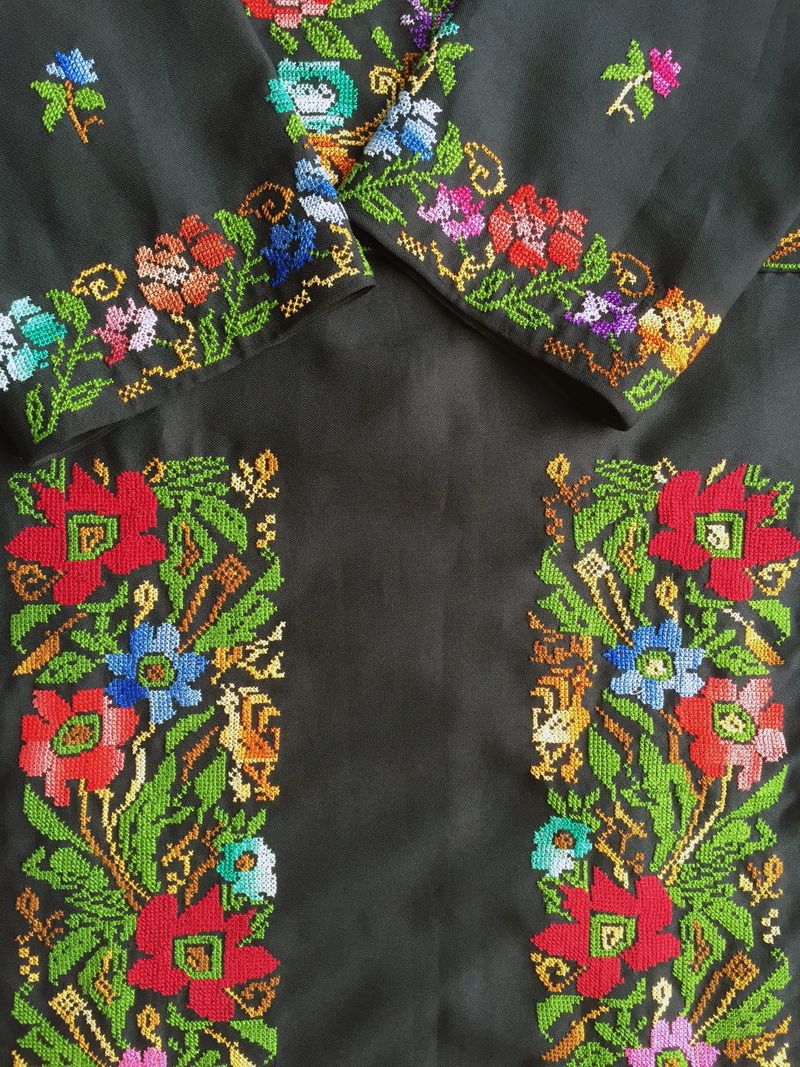
Historically, tatreez sessions have been a place for bonding between the matriarch of the family and her daughters. It [the tatreez-making session] was a time when women would engage in open dialogues, recount history, and even make marriage arrangements. Since tatreez is usually a communal activity, when you spend hours sitting [without looking at the other person] and focusing on [your hands] and each stitch, you inevitably get to know the people around you more. Tatreez sessions are a time for grandmothers and mothers to impart their wisdom to their daughters.
However, with displacement and entire villages being made refugees, tatreez sessions are a time for women to discuss their history and identities [about where the women were from, what their families did before the displacement.]
3. Tatreez has many patterns, what do they symbolise?
Artisan Al Miyari: Every region and village has slight variations in tatreez patterns that tell the story of that specific region. Tatreez styles differ by patterns and colours based on the geographical area the person is from. If I saw a woman wearing a thobe with the orange blossom motif, I could recognise this as the Beit Dajan style of tatreez, a village famous for its orange orchards.
Some dresses have swirls of embroidery on the chest, which may be made from gold or silk threads. This would have signified royalty in the past. It may be worn as part of a bridal attire now. Patterns of flowers and leaves would mean the design comes from a village or family that has some connection to farming or gardening. Cypress tree, typically known as the tree of life, is another common pattern, which can come in many variations and have different meanings.
4. What is your favourite motif?
Ghnaim: It’s the amulet. You typically see the amulet design in Palestinian embroidery and it usually has three corners, it looks like a triangle. The amulet is a protective symbol, which is often filled with herbs or essential oils, or anything with medicinal value… it’s meant to be healing.
The amulet is placed and embroidered in many different ways on the dress. It's one of the most ancient symbols that we have on our garments and the amulet is also presented in jewellery designs… as well as historic designs of Palestine, where we see it in, tiles and architecture and various other types of art that we find in Palestine.
5. What type of thread do you use for tatreez?
Artisan Al Miyari: The threads used in tatreez are usually cotton or silk thread. Silk threads are used for thobes that will be used for significant events such as weddings, while cotton threads are used for everyday work thobes. Depending on the region, the string is usually dyed using natural sources.
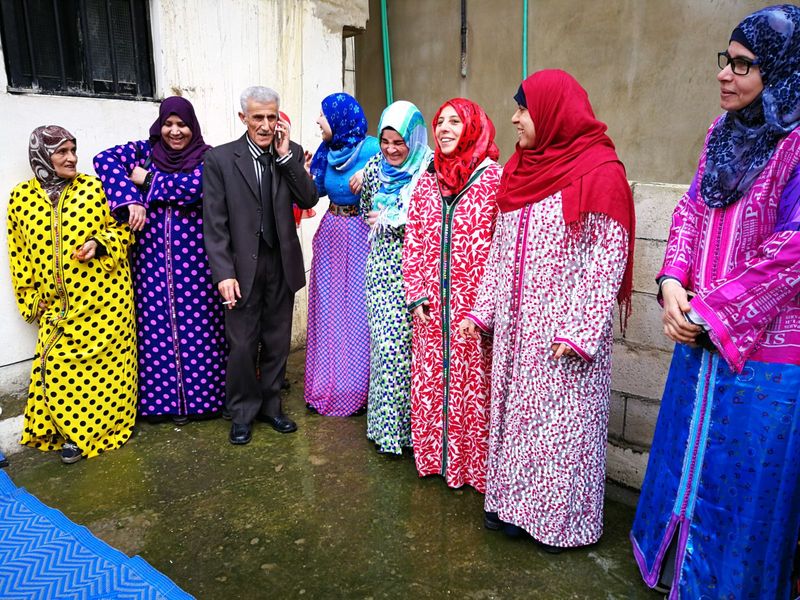
The shades and colours used for tatreez differ. It depends on the story that’s being told. All thread is dyed using plants and leaves from the region. For example, pomegranate skins are used to dye the string red, while indigo is used for different shades of blue. Yellow-green is produced using the sumac plant, yellow is produced from grape leaves, and black is made using walnut shells.
6. Does tatreez make use of certain type of fabric and where do you source the materials from?
Artisan Al Miyari: Tatreez is traditionally done by hand on either linen, silk, or a blend of both. However, with displacement, women have had to resort to using readily available materials. For example, in Gaza, women often create patchwork thobes using burlap sacks from the bags of rice and wheat they receive from donations.
Here, at the camp, tatreez is what gets most of us by. We all produce work for different organisations, on a per-project basis on items like shawls, wallets, and straps for bags. 81 Designs, a UAE-based social enterprise that employs some of the women in the camp to produce tatreez embroidery, has been the only project to offer us a sustainable income, while also giving us full creative freedom to veer away from the norm and create truly beautiful pieces that are completely out of the ordinary for most of us.

Tatreez is a very linear art - cross stitching onto materials like linen and silk. But with 81 Designs, we’ve had the opportunity to cross-stitch on new mediums like canvas, cane, and ceramic pottery. [For a new project, that required tatreez embroidery on ceramic], we [the women in the refugee camp who worked with 81 Designs] combined both thread and raffia fibre in executing the traditional tatreez technique, which is a form of ‘counted needlework [a type of stitch]’.
7. Where did you learn the art of tatreez and do you teach your skills to others in the camp?
Artisan Al Miyari: Tatreez is usually passed down from mother to daughter. So I was taught this type of embroidery from childhood. I’m constantly learning tatreez patterns. The basics are quite straightforward - cross-stitching on linen or cotton using linear patterns to tell your story.
Like every Palestinian matriarch, I teach tatreez to my children and to anyone around me that would like to learn. To me, it’s an important part of my identity, and by passing it on, I’m able to preserve this tradition.
8. How long does it take to complete the designs through tatreez?
Artisan Al Miyari: It depends on the item, the project, and the story you’re trying to tell. Traditionally, girls would begin tatreez on what would be their marital wardrobe and wedding dress from childhood as these intricate designs can take years to finish. It really depends on how ornate the design is; some pieces can take months, while others can take years.
I wake up at 7 am every morning and prepare my children for school and university. After they’ve gone to school, I have a cup of coffee with my husband and prepare for the day ahead. At 10 am, I get ready, head to the Tatreez Centre, and start my workday embroidering. Then I come back home and prepare lunch for my family and take care of any domestic chores I have. Once I’m done, I continue my tatreez work in my free time.
9. How many women in the camp know the skill of Tatreez?
Artisan Al Miyari: I would say all the women in Ain al-Hilweh are knowledgeable in some form of tatreez. Even if they don’t make a living by embroidering, most women have the basic skills.
10. Why is the art of tatreez important today?
Ghnaim: Palestinian embroidery is a popular concept amongst Palestinian diaspora, because it's a symbol of national unity. This is how Palestinian embroidery revived itself as a sense of reclamation… who wanted to connect with their cultural heritage. Today, tatreez is an endangered art form ….
11. We see only women make tatreez, is that changing now and do men participate?
Ghnaim: Actually, both do, of course, it's been rendered like a woman's work, for so long, and it is true that the artistry is represented through women's beautiful craftsmanship.
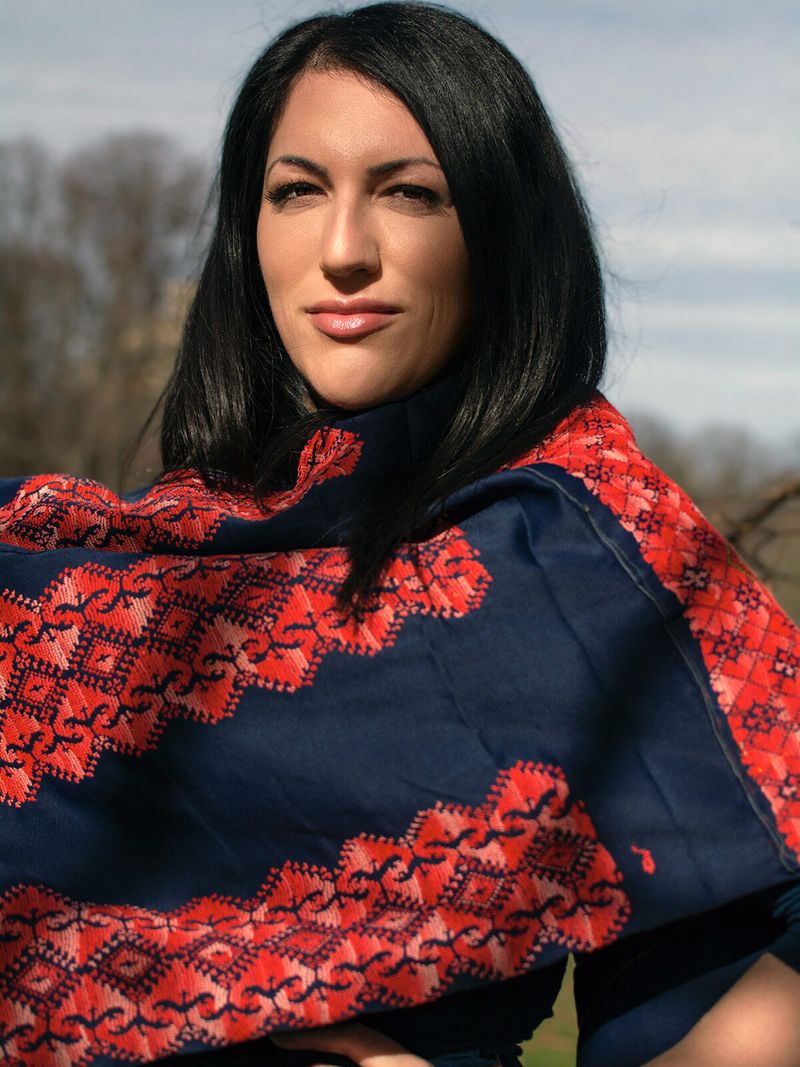
So, let's not underestimate this contribution that Palestinian women have largely made. I don't think this is just a Palestinian woman's job to preserve Palestinian textile, Palestinian embroidery, we have actually also evidence in terms of men participating.
I remember one story that talks about how, and I think this was featured in the labour of love exhibition at the Palestinian Museum. They presented a series of objects produced with embroidery on them by Palestinian men …who were political prisoners. These Palestinian men … would take their bedsheets embroider it with needle and thread brought from their families.
12. What does tatreez mean to you and your family?
Artisan Al Miyari: Tatreez is everything to me. The most crucial part of tatreez, to me, is being able to pass it on so that it never gets lost as an art form. Producing tatreez is my passion, and it brings me great happiness. Whenever I work on a tatreez project, I feel connected to my heritage and identity as a Palestinian. It is a crucial part of my identity. In fact, I would say that it’s an essential part of any Palestinian’s identity.
Being able to work in embroidery for a living helps me make ends meet and provides financial stability for my family. It helps cover my needs and allows me to make a better life for myself and my community [at the camp].
On a personal level, practising embroidery helps me clear my mind and enter a meditative state - a reprise from the daily hardships of life. Something very crucial as it helps me maintain some sort of mental stability. Tatreez is also an excellent teacher of patience and perseverance - two values that are much needed when you’re a refugee.
Like many things in life, you simply cannot rush through tatreez, it’s a long and arduous process that takes significant patience, but once you’re done and are able to look back at your beautiful creations and know that you have contributed to preserving the heritage of your people - nothing is more rewarding.
Please note: This article was published on November 11, 2022



